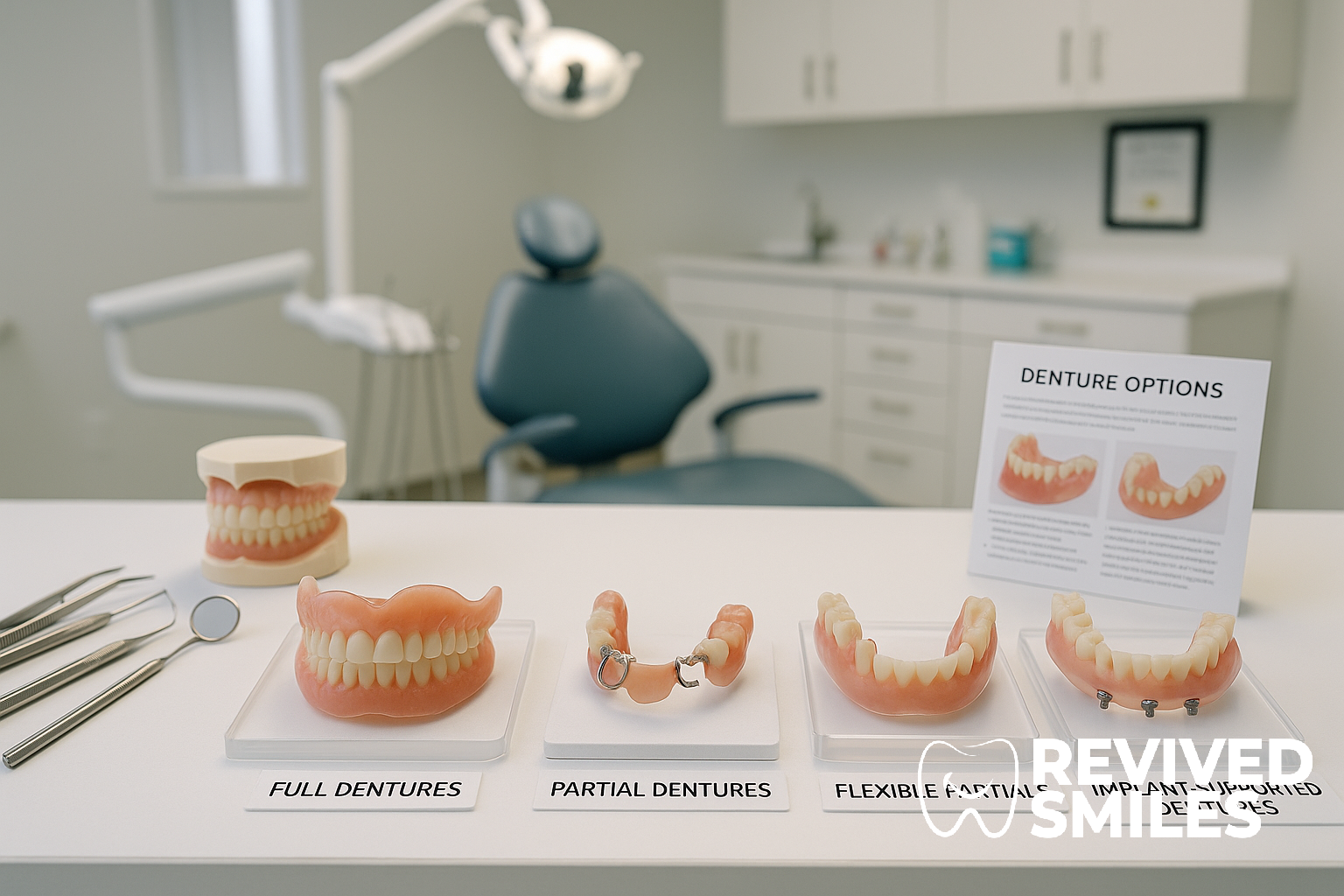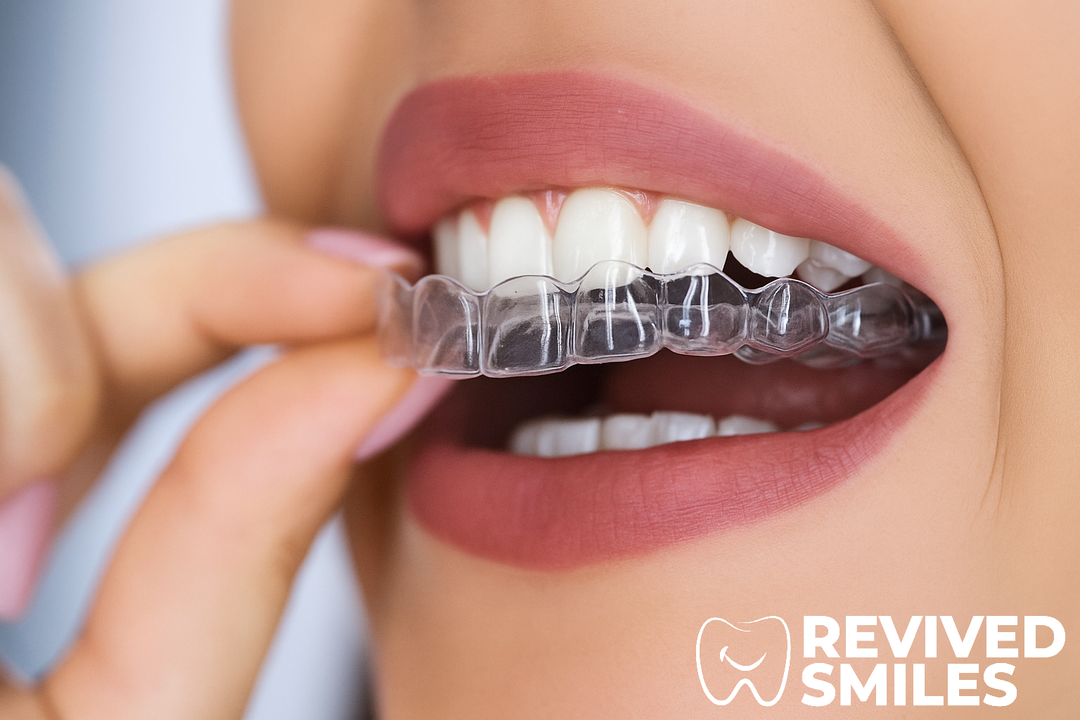Tipos de prótesis parciales: comodidad, costo y cuidados

La falta de uno o varios dientes puede hacer más que simplemente cambiar tu apariencia. Puede dificultar la masticación de tus comidas favoritas, dificultar la pronunciación y afectar tu confianza. Las prótesis dentales parciales ayudan a restaurar la función masticatoria y la comodidad, lo que facilita disfrutar de nuevo de las comidas.
Ahí es donde entran en juego las dentaduras postizas parciales: una forma práctica y no invasiva de devolverle su sonrisa y su tranquilidad.
Con tantos tipos de prótesis parciales disponibles, es fácil sentirse abrumado. ¿Cuál es la adecuada para su boca, sus necesidades y su presupuesto?
Ahí es donde entramos nosotros. A continuación, desglosamos cada tipo principal para que pueda elegir con confianza la mejor opción para su estilo de vida, ya sea que se centre en la comodidad, la durabilidad o la estética.
Introducción a las prótesis parciales
Las prótesis parciales son una solución popular y práctica para quienes buscan reemplazar dientes faltantes y recuperar su sonrisa. Como opción removible para el reemplazo de dientes, las prótesis parciales llenan los espacios dejados por dientes faltantes o dañados, ayudándole a masticar, hablar y sonreír con confianza. Suelen elegirse como una alternativa económica a los implantes o puentes dentales, especialmente al reemplazar varios dientes a la vez.
Las prótesis parciales están disponibles en diversos materiales, como metal fundido, resina flexible y acrílico. Cada material ofrece beneficios únicos, desde una apariencia natural hasta mayor comodidad y durabilidad.
Con el cuidado adecuado, las prótesis parciales pueden durar años, contribuyendo a su salud bucal y mejorando la función y el aspecto de su boca. Ya sea que le falten uno o varios dientes, las prótesis parciales pueden ayudarle a recuperar una sonrisa completa y saludable sin el mayor costo ni la invasividad de otras opciones.
Tipos de prótesis parciales de un vistazo
Comencemos con una descripción general rápida de sus opciones:
-
Prótesis parciales de acrílico
-
Prótesis parciales de metal fundido
Las prótesis parciales de metal fundido son el tipo más común de prótesis parcial removible, ampliamente utilizadas por su estabilidad, durabilidad y ajuste preciso. También se consideran el tipo más común para el reemplazo dental a largo plazo.
Ahora, veamos con más detalle qué hace que cada tipo sea único.
Para obtener información detallada sobre el costo de cada tipo, consulte nuestra lista de precios.
Prótesis parciales de acrílico
De qué están hechos
Están hechas de resina acrílica ligera, que imita la apariencia del tejido gingival. Las prótesis dentales de acrílico están adheridas a una base rosa del color de las encías, lo que ayuda a que se integren de forma natural con el color natural de los dientes.
Durabilidad
No son la opción más duradera y suelen usarse para reemplazar temporalmente dientes faltantes hasta que se puedan reemplazar con una opción más permanente. Con el tiempo, el acrílico puede desgastarse o incluso agrietarse, especialmente al morder alimentos más duros o al usarlo como restauración más permanente.
Comodidad y ajuste
Al principio pueden resultar un poco voluminosos, pero con un ajuste seguro y algo de paciencia, a muchos pacientes les resulta fácil acostumbrarse a ellos.
Consideraciones de costos
Las prótesis acrílicas se encuentran entre las prótesis parciales más económicas. Son ideales si necesitas una solución temporal o tienes un presupuesto ajustado.
Tenga en cuenta que puede haber un cargo adicional por modificaciones o solicitudes especiales más allá de la dentadura parcial acrílica estándar.
Atractivo estético
Tienen un aspecto decente para el precio, pero pueden no ser tan realistas como otros materiales. A veces, los dientes artificiales pueden resultar más visibles junto a los dientes naturales.
Mantenimiento y cuidado
Son fáciles de limpiar y deben retirarse cada noche. Solo tenga cuidado de no usar agua caliente, ya que puede deformar el acrílico y afectar su cuidado y durabilidad.
Mejor para…
Personas que necesitan algo temporal o económico. Si está esperando un implante dental o una restauración permanente, estas opciones son ideales mientras tanto.
Prótesis parciales flexibles
De qué están hechos
Están hechos de nailon flexible o resina acetálica que se adapta a la boca del paciente. No tienen cierres metálicos, solo un ajuste suave y ligeramente flexible que se adapta a la perfección.
Durabilidad
Más duraderos que los de acrílico, estos se mantienen bien con el paso del tiempo. Son menos propensos a astillarse o romperse bajo presión, lo que los convierte en la mejor opción para muchos pacientes que buscan reemplazar dientes perdidos.
Sin embargo, existe un equilibrio entre la estética mejorada y la comodidad de las prótesis parciales flexibles y la durabilidad aún mayor que ofrecen las opciones con estructura metálica.
Comodidad y ajuste
La comodidad es su seña de identidad. Se adaptan perfectamente a las encías y se sienten más como parte de los dientes naturales que como algo extraíble.
Consideraciones de costos
Son más caras que las de acrílico, pero más baratas que las de metal fundido. La mayor comodidad y la estética mejorada suelen justificar el precio más alto.
Atractivo estético
Son una de las opciones más naturales, ofreciendo una apariencia mejorada al integrarse con los dientes naturales y evitar el metal visible. Al no tener ganchos metálicos visibles, suelen considerarse la mejor prótesis parcial para quienes priorizan una apariencia natural.
Mantenimiento y cuidado
La limpieza diaria es imprescindible, pero tienden a resistir mejor las manchas que las de acrílico. Solo recuerda quitártelas por la noche y guardarlas correctamente como parte de tu rutina de cuidado de prótesis dentales extraíbles.
Mejor para…
Para quienes priorizan la comodidad y la estética. Son especialmente ideales si solo necesita reemplazar algunos dientes dañados o si necesita algo que complemente sus dientes naturales restantes.
Explore las prótesis parciales flexibles en Revived Smiles
Prótesis parciales de metal fundido
De qué están hechos
Estos tienen una base metálica resistente, generalmente de cobalto-cromo u otro metal. Los dientes artificiales se anclan en acrílico o porcelana y se sostienen sobre una estructura de metal fundido, diseñada para ajustarse con precisión a la boca del paciente, brindando una estabilidad y una apariencia óptimas.
Durabilidad
Son las prótesis más populares en el mundo. Las prótesis parciales de metal fundido son especialmente eficaces para reemplazar dientes faltantes y restaurar la función masticatoria, y están diseñadas para durar años, incluso décadas, con el cuidado adecuado.
Comodidad y ajuste
Al principio, pueden sentirse un poco más pesados, pero la mayoría de los pacientes se adaptan rápidamente. Un profesional dental puede hacer ajustes para asegurar que... La prótesis parcial se ajusta cómodamente a la boca del paciente y satisface sus necesidades, proporcionando un ajuste seguro y una mejor alineación con los dientes naturales restantes.
Consideraciones de costos
Estas son unas de las prótesis parciales más caras. Sin embargo, debido a su larga duración y a su fiabilidad como alternativa a los puentes dentales o las prótesis completas, muchos consideran que vale la pena invertir en ellas.
Atractivo estético
Pueden tener cierres metálicos visibles, lo que a algunas personas les resulta menos atractivo. Aun así, su resistencia y durabilidad suelen compensar la desventaja estética.
Mantenimiento y cuidado
Son fáciles de limpiar, especialmente si se siguen las instrucciones de cuidado adecuadas. Simplemente evite los limpiadores abrasivos que podrían corroer la estructura metálica.
Mejor para…
Personas que necesitan una solución resistente y duradera. Las prótesis parciales de metal fundido son ideales si le faltan varios dientes o si desea una prótesis parcial removible más duradera.
Prótesis parciales de resina acetal
Las prótesis parciales de resina acetálica son una opción innovadora para pacientes que buscan comodidad y una apariencia natural. A diferencia de las prótesis parciales tradicionales de metal fundido, las prótesis parciales de resina acetálica utilizan una resina del color del diente para la estructura y los ganchos, lo que permite que se integren a la perfección con sus dientes naturales. Esto significa que no se ven los ganchos metálicos al sonreír, solo una apariencia natural y uniforme.
La resina de acetal es ligeramente flexible, lo que ofrece un ajuste cómodo que se adapta al contorno de la boca. Esta flexibilidad proporciona la misma resistencia y soporte que una prótesis parcial de metal fundido, pero con mayor comodidad y una estética mejorada.
Los pacientes que desean evitar la apariencia metálica y prefieren una prótesis parcial más discreta suelen encontrar en las prótesis parciales de resina acetal una excelente opción. Si busca una prótesis parcial que realce su sonrisa y le brinde comodidad y seguridad, vale la pena considerar las prótesis parciales de resina acetal.
Soluciones de reemplazo de dientes no removibles
Si bien las prótesis parciales son una forma confiable de reemplazar los dientes faltantes, no son la única opción disponible. Los puentes dentales y los implantes dentales son dos soluciones fijas que ofrecen una restauración más permanente para los dientes faltantes.
Los puentes dentales utilizan los dientes naturales adyacentes como soporte, creando un reemplazo fijo que se ve y funciona de forma muy similar a los dientes originales. Los implantes dentales, por otro lado, se anclan directamente en el hueso maxilar, proporcionando una solución estable y duradera que imita fielmente la dentadura natural.
Si bien las dentaduras parciales removibles son una excelente opción para muchos pacientes, los profesionales dentales pueden recomendar puentes o implantes para quienes buscan un resultado más permanente y de sensación natural.
La mejor opción depende de su salud bucal, la cantidad de dientes faltantes y su presupuesto. Consultar con su dentista o protésico dental le ayudará a determinar si una prótesis parcial removible, un puente dental o un implante dental es la opción más adecuada para sus necesidades.
Dentaduras postizas parciales versus dentaduras postizas completas
La principal diferencia entre las prótesis parciales y las completas radica en el soporte que brindan los dientes naturales. Las prótesis parciales están diseñadas para funcionar junto con los dientes naturales restantes, utilizándolos para mayor estabilidad y soporte. Esto hace que las prótesis parciales sean más estables y seguras que las completas, que descansan completamente sobre las encías y, en ocasiones, pueden desplazarse al masticar.
El éxito de una prótesis parcial depende de la salud y la posición de los dientes pilares , los dientes naturales que ayudan a anclar la prótesis. Cuando estos dientes están bien espaciados, proporcionan una base sólida, minimizando el movimiento y mejorando la función.
Las prótesis parciales bien diseñadas permiten una mejor masticación y mayor comodidad en comparación con las prótesis completas, que pueden resultar menos estables incluso con un buen ajuste. Los profesionales dentales evalúan cuidadosamente las necesidades y preferencias de cada paciente para seleccionar la prótesis parcial más adecuada para un soporte y una función óptimos.
¿Cómo debe ajustarse una dentadura parcial?
Una prótesis parcial bien ajustada debe ser cómoda, tener un aspecto natural y funcionar correctamente al masticar. La mejor prótesis parcial para usted depende de sus preferencias individuales y necesidades clínicas.
Las prótesis parciales de metal fundido, con su precisa estructura metálica, suelen ofrecer un ajuste seguro y una excelente eficiencia masticatoria. Sin embargo, algunos pacientes pueden encontrar incómodo el metal rígido o desagradarles la apariencia de los ganchos metálicos.
Las prótesis parciales flexibles, que no utilizan ganchos metálicos, son más suaves con las encías y se flexionan ligeramente al masticar, lo que mejora la apariencia y la comodidad. Sin embargo, pueden no ser tan efectivas para reemplazar periodos largos de ausencia de dientes o en situaciones donde se requiere la máxima retención.
Las prótesis parciales flexibles suelen tener menor retención que las de metal fundido, por lo que existe un equilibrio entre la estética y la firmeza de la prótesis. Los pacientes que han usado prótesis parciales de metal fundido anteriormente pueden notar esta diferencia y deberían consultar con su dentista sobre sus opciones para encontrar el equilibrio perfecto entre comodidad, estética y funcionalidad para sus necesidades.
Cómo elegir prótesis parciales que se adapten a usted

¿No sabes por dónde empezar? Piensa en cómo vives día a día. Tu La elección de una dentadura postiza debe adaptarse tanto a su estilo de vida como a su boca.
Después de considerar estas preguntas, es importante consultar con profesionales dentales o con su dentista para determinar el mejor tipo de prótesis parcial para sus necesidades individuales.
Considere estas preguntas:
-
¿Necesitas algo temporal o a largo plazo?
-
¿Es la comodidad más importante que la durabilidad, o viceversa?
-
¿Te molestan los cierres metálicos visibles?
-
¿Tiene un presupuesto ajustado o está listo para invertir en longevidad?
Al sopesar sus prioridades, le resultará mucho más fácil elegir los materiales, el ajuste y la función adecuados para su sonrisa.
Explore nuestra colección de prótesis parciales
Consejos para la reparación y limpieza de prótesis parciales
Cuidar su dentadura postiza no tiene por qué ser complicado. Con unos sencillos hábitos, puede mantenerla limpia, cómoda y en perfecto estado. Consulte nuestro programa Smile Refresher para la limpieza de su dentadura postiza .
Consejos de limpieza que funcionan:
-
Quítatelos antes de acostarte para que tus encías puedan descansar.
-
Enjuágalos después de las comidas para eliminar las partículas de comida.
-
Cepille sus dientes diariamente con un cepillo de cerdas suaves.
-
Utilice limpiadores específicos para dentaduras postizas, no pasta de dientes.
-
Nunca use agua caliente, especialmente para opciones acrílicas o flexibles.
¿Qué pasa si se rompen?
Algunos tipos, especialmente los parciales flexibles, no se pueden Rebasado o ajustado. Si el suyo se agrieta o se rompe, es posible que no sea posible repararlo. En tales casos, lo mejor es consultar con un profesional dental y explorar las opciones de reemplazo.
Conclusión: Devolvamos tu sonrisa
Elegir la dentadura postiza adecuada no se trata solo de reemplazar dientes; se trata de recuperar la comodidad, la confianza y la tranquilidad en su vida diaria. Opciones como Las prótesis parciales Valplast están disponibles para aquellos que buscan una solución flexible y sin metal para reemplazar los dientes faltantes.
Ya sea que elija acrílico económico, metal fundido ultra cómodo, flexible y duradero, o resina temporal, hay una combinación perfecta esperándolo.
¿Aún tienes dudas? Estamos aquí para ayudarte en cada paso del proceso. En Revived Smiles , nos especializamos en prótesis parciales removibles diseñadas para adaptarse a tu estilo de vida y presupuesto.
Las dentaduras postizas parciales, incluidas las Valplast, son una solución eficaz para reemplazar los dientes faltantes y restaurar tanto la función como la estética.





Dejar un comentario